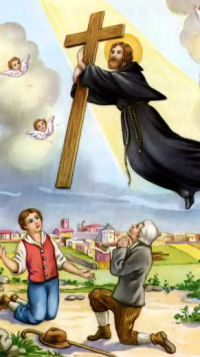While the alignment of tree clumps in the West Kent area has rightly attracted the attention of some our most sensible investigators, the alignment of tree clumps in the East Kent area has been criminally neglected – until now. One of the most startling findings of the recent Blötzmann study, published in Tree Clump Alignment News, is that the alignment of the tree clumps in the eastern part of the county is significantly more intriguing than the alignment of tree clumps in the western part of the county. Studied from one angle, for example, a particular set of eastern tree clumps is identical to the alignment of Abraham Zapruder, Badge Man, Umbrella Man, Marymoon Man, JFK, and the sixth floor window of the Texas Schoolbook Depository at the precise moment the first shot was fired on that fateful November day in 1963 in Dallas. Viewed from a different angle, the very same tree clumps are aligned in a pattern one can only call chaotic. A second set of tree clumps, more easterly in Kent than the so called “Assassination Clumps”, reproduces exactly the disposition of the players on the pitch at the moment when South Africa scored the opening goal in the 2010 World Cup, a goal described calmly by the television commentator as “one of the most important moments in the entire history of sport”. Yet, again, seen from another angle these very same tree clumps form merely a random pattern.
The various angles to which I refer are those obtaining between the tree clumps on the ground and the position of the Blötzmann Tree Clump Project airship in the sky. Obviously, the position of the tree clumps on the ground is fixed, while the position of the airship in the sky is variable. I probably do not need to explain this, but am doing so in case you are extremely stupid. Those of you who believe that tree clumps on the ground are not stationary may have been malignly influenced by great works of literature, such as Macbeth, or infantile pieces of tosh, like all that Tolkien twaddle. If you happen to live in the East Kent area you may have seen the Blötzmann dirigible hovering at varying points in the sky. It looks not unlike the ill-fated Hindenburg (without the inferno of flames, obviously) although it is clearly identifiable from the word BLÖTZMANN in big bold block capital letters emblazoned across its side. It does not identify itself specifically as the Tree Clump Project airship, for it is used in many another of Blötzmann’s exciting activities, at least in those which require an airship for their completion and hoped-for success.
From the above it should be clear that proper perception of the alignment of the East Kent tree clumps depends to a large extent on the altitude and position of the airship. At ground level, it is almost impossible to appreciate the significant patterns created by the tree clumps. One can trudge about in one’s rambling gear among the “Assassination Clumps” or the “History Of Sport Clumps”, or indeed among the other tree clumps I have not mentioned, and be none the wiser. That is why we should be grateful to Blötzmann for making such admirable use of his airship, rather than leaving it neglected in its giant hangar, as some other airship owners do. I am not naming names, but they know who they are.
Blötzmann’s interest in the alignment of tree clumps in the East Kent area was prompted not, surprisingly, by Tony Wedd’s important study of the alignment of tree clumps in the West Kent area, but by a stray reference in a yellowing old copy of the St Bibblybibdib’s Parish Magazine And Religious Tirade, where a writer identified only as “Righteous Wanderer In The Woods” makes mention of a wander in the woods when his righteousness was tempted by some sort of hobgoblin tree spirit, green and pagan and covered in leaves and twigs. The author claims that, after fleeing from this sprite in fear for his immortal soul, he lay in the bath and realised that the trajectory of his fleeing, if represented in diagrammatic form, was analagous to the pattern made by a journeyman hiking between the cantons of Switzerland in alphabetical order. Blötzmann made the intuitive leap, in reading this, to a recognition that further significant patterns could reveal themselves through close study of the alignment of such things as tree clumps, piles of pebbles, and even the distribution across the landscape of airship hangars.
It is the latter to which he will next turn his attention, and I am proud to say that, before taking off in the Blötzmann airship, he will be making much use of my database of hangars, which I compiled in order to fire off a series of sternly-worded poison pen letters to their owners. For the benefit of readers I would have liked to transcribe one of the letters here. Alas, they proved so toxic as to be lethal, and I would not wish any of you to keel over and perish, like a budgerigar zapped by a death ray.

